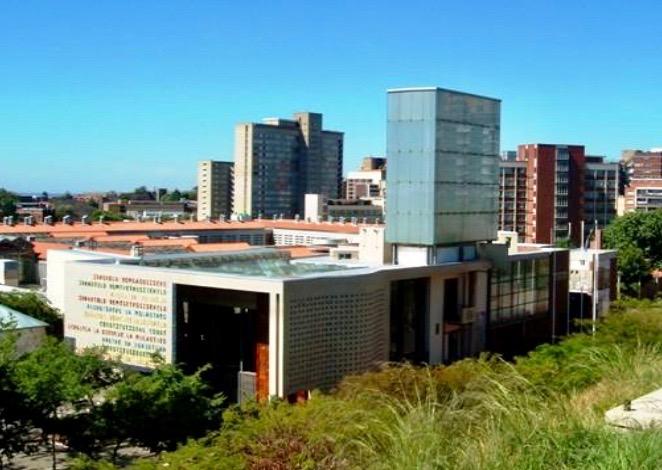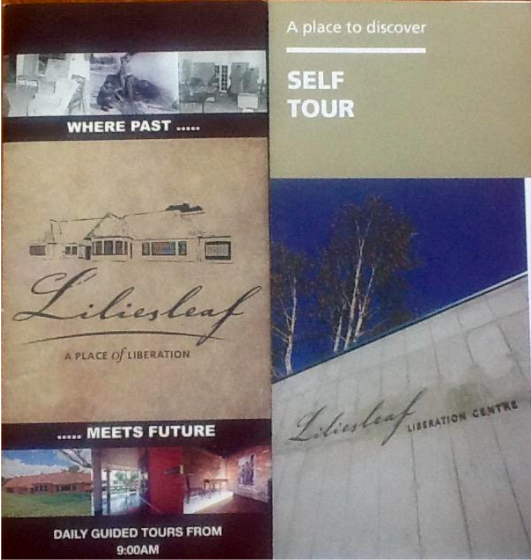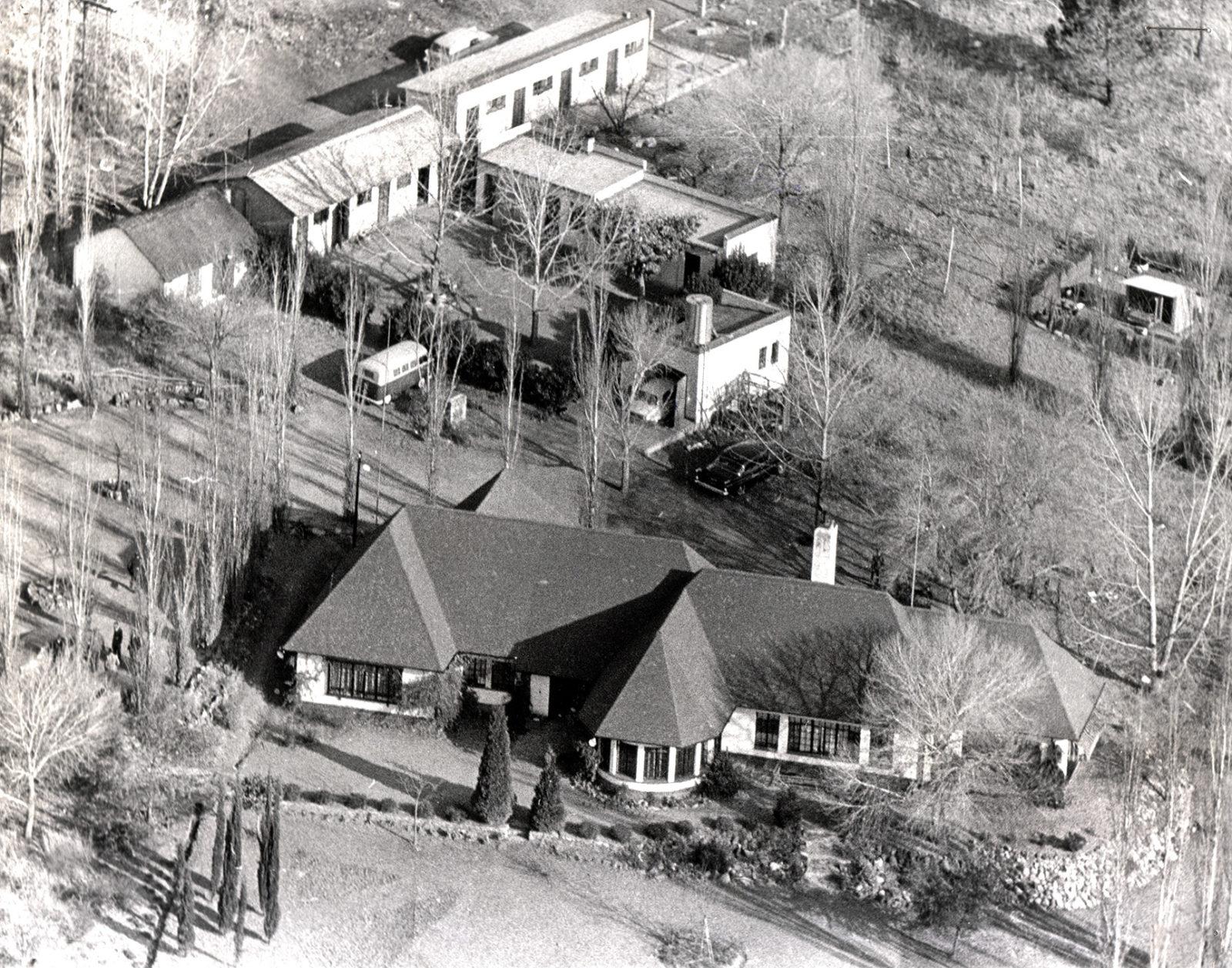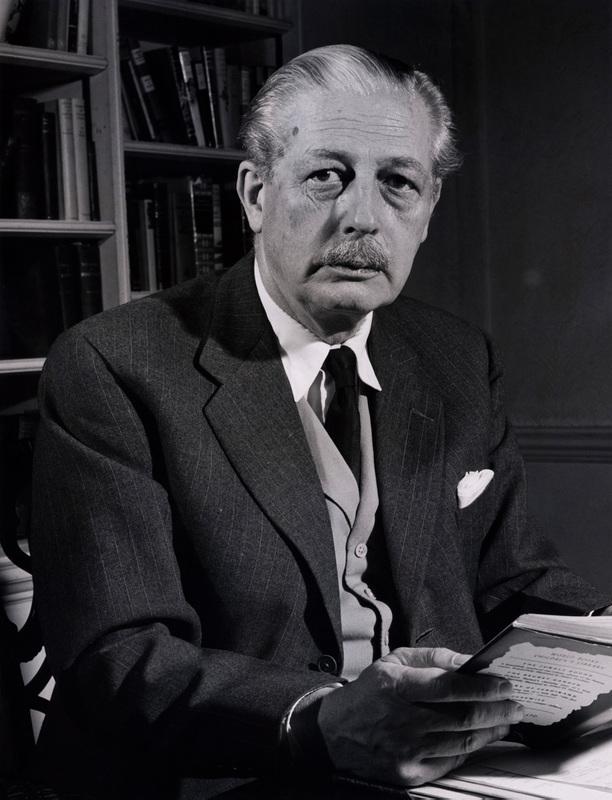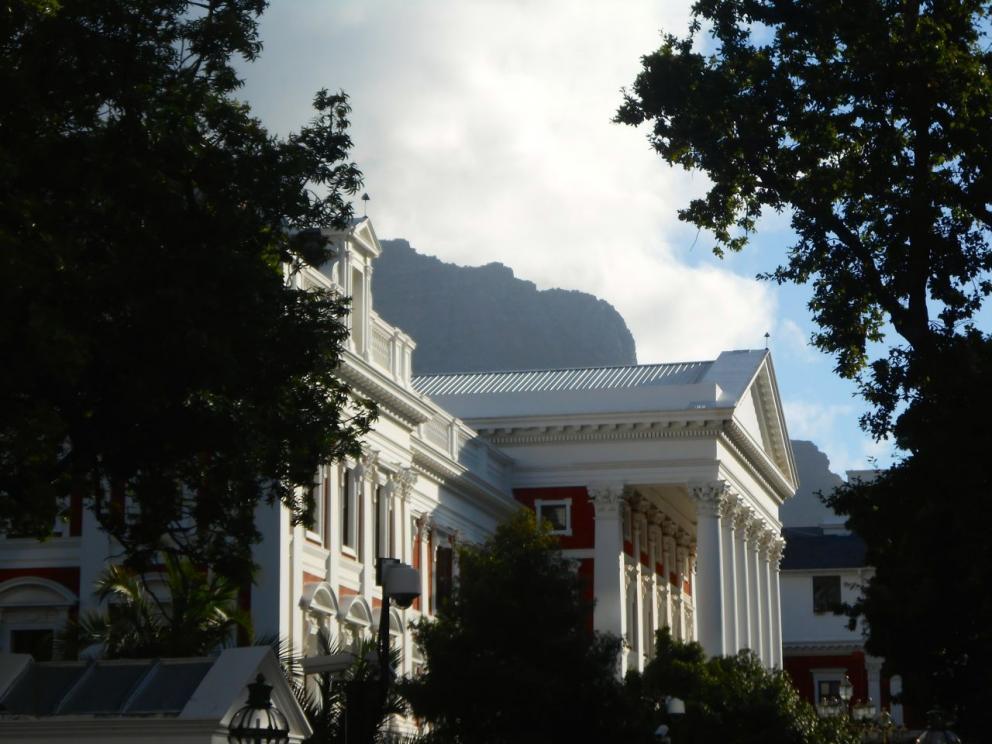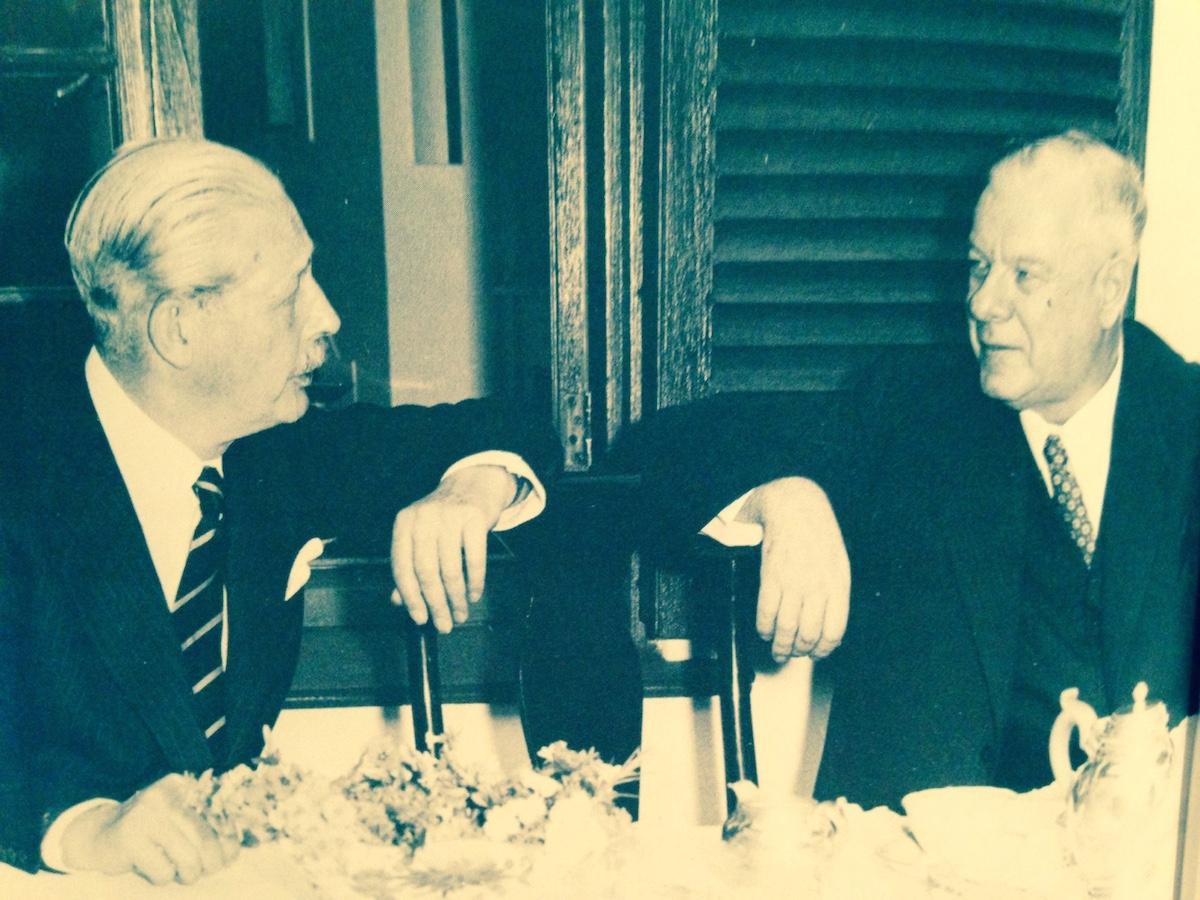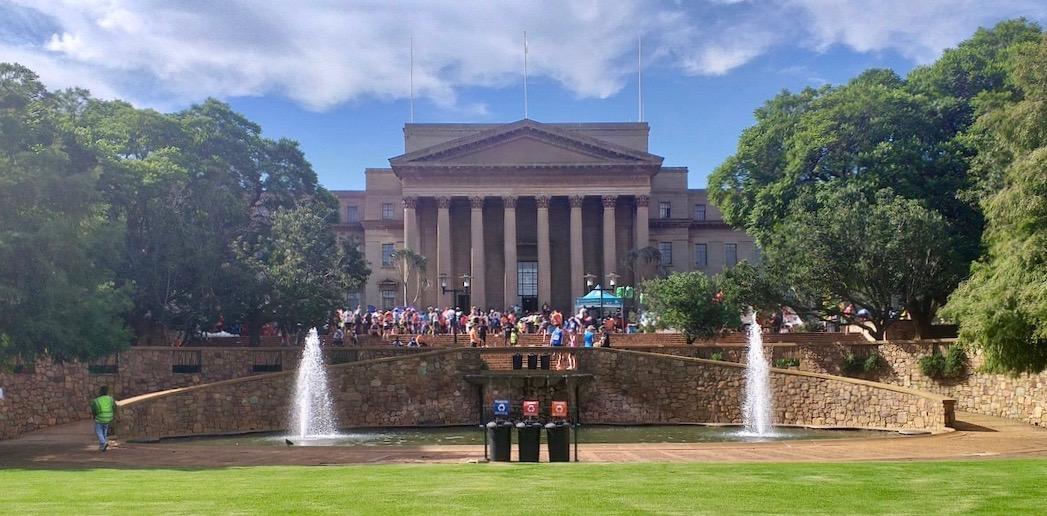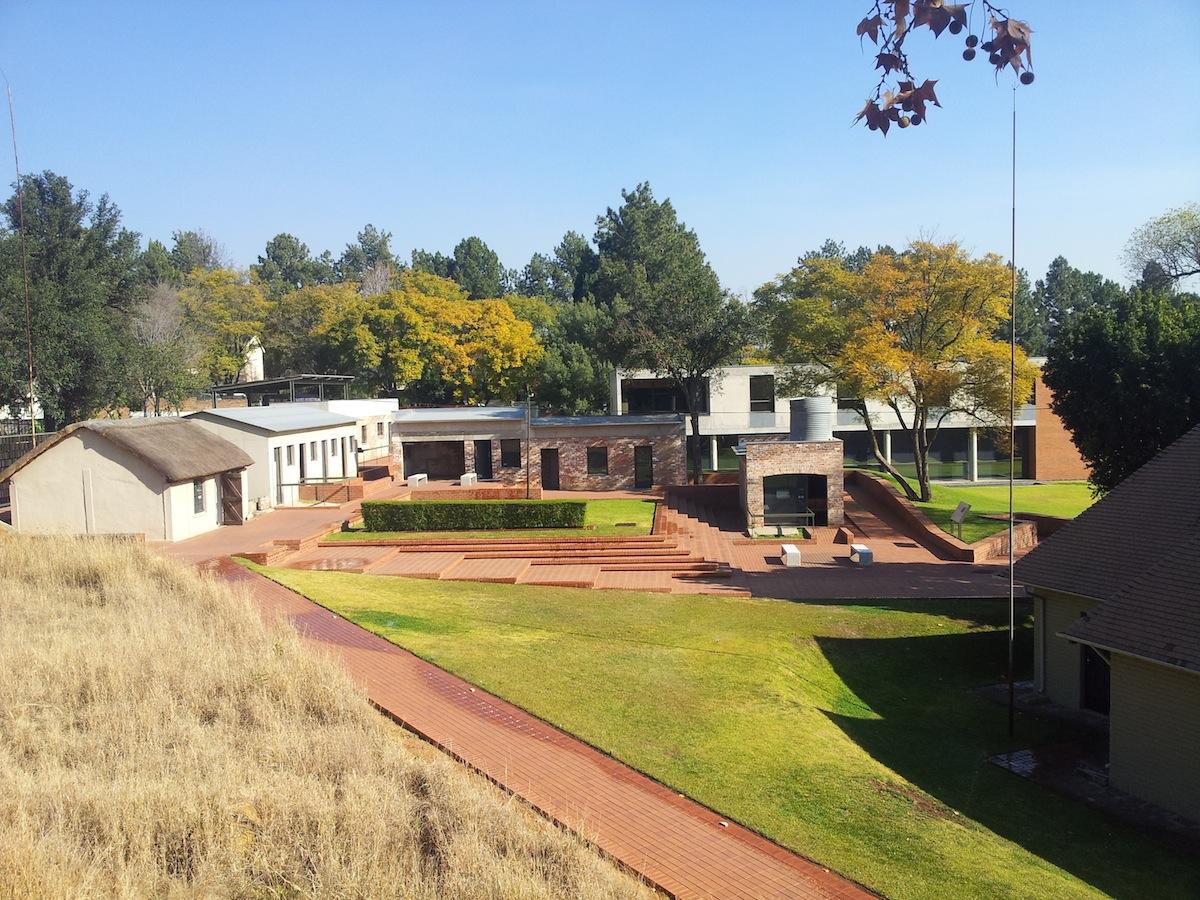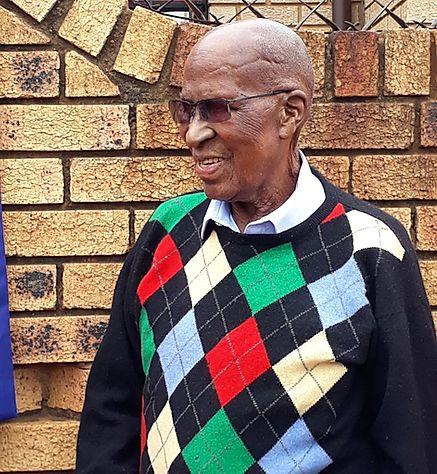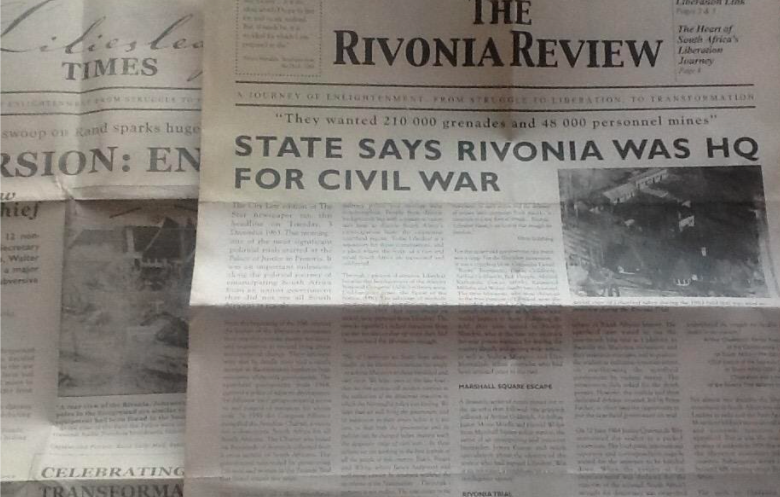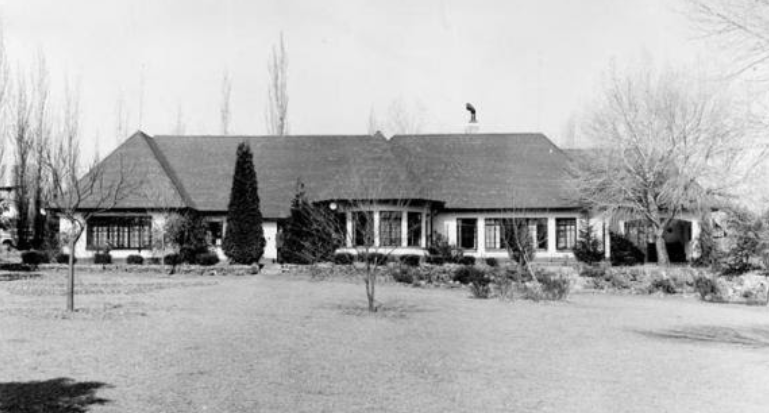
Disclaimer: Any views expressed by individuals and organisations are their own and do not in any way represent the views of The Heritage Portal. If you find any mistakes or historical inaccuracies, please contact the editor.
September is Heritage Month but it is a downer when the news comes through that the museum and heritage site Liliesleaf Farm in Rivonia has closed its doors permanently. The news of closure announced by the CEO and founder of the Liliesleaf Trust, Nic Wolpe, son of Harold Wolpe, comes as a surprise. It is inconceivable that this unusual centre and museum should disappear off the well-trodden tourist route of Johannesburg. Liliesleaf, like the Apartheid Museum (also now closed but on a temporary basis), is a must visit site of history if you want to understand South Africa’s history of the last century. Liliesleaf was once a farm and was the centre piece in Liberation History.
One can argue that Liliesleaf is simply a casualty of Covid. Museums suffer when no one goes out and foreign tourists stop coming to South Africa. All we could hope was that the wondrous treasures that so many galleries and museums hold are protected and cared for during this long inactivity. Museums and galleries only live when people visit and are curious about the knowledge therein. There are over forty Museums in Johannesburg and all have suffered during the past 18 months when doors closed temporarily as the country went into lockdown.
In May 2021 museum stakeholders gathered at Constitutional Hill to launch the Johannesburg Museum Manifesto highlighting the plight of all museums. The Manifesto, drawing attention to the crisis facing so many museums, was posted on The Heritage Portal (click here to view).
Con Hill (The Heritage Portal)
Liliesleaf Farm is something of a special case museum because it is so central to the recent history of South Africa and its liberation from apartheid rule. It is a declared National Heritage site owned by the Liliesleaf Trust.
Liliesleaf has for years been recognised by the state as a national asset important to the ANC story and the liberation struggle. Over a period of 13 years, the National Department of Sports Arts and Culture has provided a sum of over R70 million for Liliesleaf. Liliesleaf is important to the story of the long road to the first free democratic election of 1994, the rise of the ANC to power and the liberation struggle.
A visit to Liliesleaf anytime in the pre Covid years, would seem to show that those funds were invested in exhibits, the restoration of the farmhouse, an attractive café, overnight accommodation in a boutique hotel, a conference centre, a ticket office and external additional buildings. Liliesleaf was promoted as “A place of Liberation” and “a site of memory” and its legacy captured in impressive souvenir leaflets. One brochure quotes George Santyana: “those who cannot remember the past are doomed to repeat it.” There is the choice of a tour with a qualified guide or a self-guided tour with a well written brochure. Newspaper style reviews explain how Liliesleaf was the critical link in struggle history and that it was from Liliesleaf that Umkhonto we Sizwe (MK) launched its first military attack on 16 December 1961. It was an impressive venue and the publicity material was attractive and of a high quality.
Self tour material
It is not an easy story to tell because one has to bring back not simply what happened but why the African National congress chose a path of violent revolution with attacks on essential infrastructure such as power pylons or placing bombs at soft targets. Liliesleaf was the meeting place for the Central Committee of the Communist Party, the Congress Alliance, the Secretariat, the Working Committee, the High Command of MK, Military Intelligence and Logistics according to a brochure. This sounds like a giant enterprise but in fact the number of people involved in the underground resistance to apartheid was fairly small.
It is difficult to picture Rivonia as it was 60 years ago. Today, Rivonia is a northern Johannesburg suburb; it is part of Sandton between Woodmead and Petervale. Depending on the route you choose, it lies between 20 and 26 kms north of the city centre but is easily accessible from the N1 Western motorway bypass and Witkoppen Road. Rivonia lies between the Braamfontein Spruit and the Sandspruit; it is a pretty suburb with a few stretched out business spines along the tree lined main roads. Many of the older, large detached homes set in spacious gardens have been demolished and replaced by townhouses and cluster homes, lodges and mews. Once upon a time Rivonia was a remote village that was not part of Johannesburg city; in fact Rivonia does not feature in Anna Smith’s standard reference book on the suburbs and street names of the city. It was a countrified place. Properties were large - two to three acres. A Carmelite Convent, a contemplate order was founded in Rivonia in 1931; the convent moved to Benoni in the face of commercial pressure and a large shopping centre was built on the site of the convent and named The Cloisters catching an echo of the past. The main road through the village was simply named Rivonia Road. The Rivonia Recreation Club, the Rivonia Hall and the Library contributed to the close knit village community. The earliest public transport into Johannesburg was by donkey cart. Rivonia Produce was a landmark family business that supplied hay to the local horse owners. Rivonia was for country people who wanted to live away from the city. Perhaps they dabbled in small farming, rode horses, played polo or hunted.
Liliesleaf Farm on George Avenue was a remote and secluded spot and ideal for a group of idealistic and committed people wanting to work out a revolutionary plan to overthrow the South African apartheid government of the day. Goldreich and Harold Wolpe, a lawyer, used South African Communist Party funds to buy Liliesleaf Farm in Rivonia in 1961 for use as a secret meeting place. The secret life of the revolutionaries at Liliesleaf had a very brief flowering – the key years were 1961 to mid-1963. Arthur Goldreich lived as the tenant of Liliesleaf with his then wife Hazel and his two sons, Nicholas and Paul. They were white, the “right colour“ to belong in Rivonia, so their presence did not attract attention; this was the perfect cover.
Old photo of Liliesleaf from above (Liliesleaf Trust)
Today it is difficult to recall the political atmosphere, almost paranoia of the early sixties. The National Party had a firm hand on government but there was anxiety and a growing feeling of political isolation and defiance. The Nationalist Government had pushed through all of the key pieces of legislation around group areas, pass laws, job reservation, forced removals, prohibited marriage across the colour bar, whites only democracy and so much more. Black people had no rights other than in the so called Bantu Homelands which then evolved into a dream of splitting South Africa into separate states – ten Bantustans. The world did not approve of this march towards the right and this extreme nationalism. Macmillan delivered his 'Wind of Change' speech in the Cape Town Parliament in February 1960, reminding South Africa that the British Empire in Africa was on its way to independence and Britain would keep the façade with a Commonwealth of Nations but actually African political rights had to be recognized.
Harold Macmillan (Wikipedia)
Parliament (The Heritage Portal)
March 21st 1960 witnessed the shocking Sharpeville Massacre, the state’s heavy and brutal response to a pass protest. At the same time, the country celebrated 50 years of the Union of South Africa but following a whites only referendum a Republic was declared and South Africa left the Commonwealth. Defiant isolation had started and the shooting of Verwoerd at the Witwatersrand Agricultural Society opening in Johannesburg by Pratt did not give cause for pause.
Verwoerd and Macmillan (A Life in Pictures)
In these bleak circumstances it certainly seemed that the majority black population of South Africa had no recourse to peaceful change and resistance and it is against that background that the events and structures put into place at Liliesleaf begin to make sense. One can see this mix of men as either brave or fool hardy. It was here that the freedom fighters planning a new world in 1963 were betrayed and themselves spied upon and arrested.
A few years ago I took my brother Robert to visit Liliesleaf. We went to discover an important part of our own history. Rivonia was part of the vocabulary of my teenage years. I went in search of memory. I still remember the events at Liliesleaf and The Star newspaper headlines of 1963. On 11 July security police raided the farm and captured 19 people. They were meeting in the thatched room, and were stunned by the raid. I recall there was a frisson of fear when headlines in newspaper stories talked of swoops, hidden weapons and the suppression of bloody revolution. These men were charged with treason and the trial became known as the Rivonia Trial and so earned a place in South African history.
My brother Robert Lucas was on a return visit for a family celebration; he had emigrated to Australia back in 1980. His children are Australian and not South African. My brother was born eight years after me and was only 10 at the time of the raid on Liliesleaf. For him, Liliesleaf had a different significance. He represented the young (barely out of their teens) white males conscripted into the South African Defence Force of the late 1960s to fight what the government of the day said were Communist foes. He was an 18 year old school leaver forced to serve the apartheid state; he learned drill and trained to wield a gun and drive a tank. It is often forgotten that many whites did not welcome the military approach of the state but as citizens were forced to comply.
After Robert’s military service he returned to Johannesburg and entered Wits to study for a BCom and then a CA qualification. He did not want to be a soldier. A gentle and quiet personality, he knew he did not want to fight anyone but was also not the type of person to join the Communist party and become a liberation hero. Even when he had served his required 24 months he had to be available to go on Camps, the so called three week spells in the bush that lasted three months. He had to fit in with the South African white regime by taking a military managed jaunt to Angola. I have some surviving letters which should now surely go into an archive - censored, they tell nothing of what it was really like to serve in the army - “a boetie on the border”. His story must have been that of many young white male adults. By the later 1970s, despite the fact that he had a young wife and had invested in a house, the final call up for a camp saw him flee to Jan Smut Airport, book a business flight and send a telegram to the SA Defence Force with the message: “Sorry to disappoint I am away on business”. It was a fateful move that led to permanent emigration leaving our mother distraught. His wife followed him to the UK six months later.
Wits Great Hall (The Heritage Portal)
For my brother, returning to South Africa thirty years after he had chosen a different road, Rivonia and Liliesleaf presented an opportunity to reflect on the accidents of history and how fate or chance determines a path through life. A visit to Liliesleaf spoke to his history and not only the history of liberation but also of command and management by the state of all citizens. Here was the opportunity to finally meet the enemy and confront the past. Here was the chance to learn about the enemy who had plotted and schemed at Lilliesleaf. Of course Liliesleaf is all about the Liberation Movement, heroic deeds, the secrecy of planning armed revolution, but for a mature white man it also echoed back to his youth and the lost opportunities of being young, white and a soldier of the apartheid state. We found the visit informative and interesting and a great eye opener. For my brother, he also gave it a shrug of the shoulder and felt it was also all about wasted lives, life’s unexpected turns and all those “what might have beens”. It was sad and nostalgic. My brother’s history and that of other young white men from the sixties to the eighties was not part of the Liliesleaf saga but there were the faint thoughts of what might have been.
Liliesleaf does not tell of reconciliation with those who were on the other side of the conflict or gaining new perspectives on supposed enemies of the past. How very different was the experience of Nicholas Wolpe whose father Harold escaped South Africa. Nic grew up in England and returned to South Africa when liberation actually came after 1994.
Liliesleaf Farm is a site of memory and a place of Liberation. The lavish museum backed by government is one that should not close. It is an important site for all South Africans whatever your political persuasion or experience.
A recent shot of Liliesleaf Farmhouse (The Heritage Portal)
The outbuildings at Liliesleaf (The Heritage Portal)
In 2015 the Department of Sports, Art & Culture provided a sum of R9 million to upgrade facilities. It appears to have been a capital expenditure contract but the fur is now flying because Wolpe spent the R8.1 million transferred to the Trust on running costs and not on capital expenditure. His reports and explanation were rejected and R900 000 remained in the hands of the Department.
It appears that the closure of Liliesleaf has followed because there are insufficient funds to meet running costs. I was astounded to see Nic Wolpe featured in The Sunday Times in the Hogarth column for 5th September as the 'Mampara of the Week' with the accusation that Wolpe is unable to account for R8.1 million of funds granted. Wolpe’s side of the story was that staff needed to be paid and the property maintained. He too thinks it is a museum that should remain open to tell the story of the ANC in the early 1960s.
As mentioned, it was here that a group of courageous men took the radical step of turning to armed resistance. They were an unlikely group of revolutionaries. The farm outbuildings became home to various key ANC black members who posed as “servants” of the white Goldreich family. Here the leaders of a hoped for revolution developed a plan for guerrilla warfare (Operation Mayibuye) with its own printing press and a secret radio transmitter. The men who were arrested on that fateful day in 1963 - Raymond Mhlaba, Govan Mbeki, Rusty Bernstein, Walter Sisulu, Bob Hepple, Ahmed Kathrada and Denis Goldberg - are today heroes of liberation and along with Mandela stood trial for treason in the Rivonia Trail. They could have been given the death sentence but instead it was a life sentence and seven men, all key black leaders - Nelson Mandela, Walter Sisulu, Govan Mbeki, Raymond Mhlaba, Ahmed Kathrada, Andrew Mlangeni were exiled to Robben island. Bob Hepple turned state witness and then departed for England where he became a QC and eminent legal figure.
Rivonia entered history but it was a history only officially recognized in South Africa after 1994. In 2001 the then owners, Veda and Helmut Schneider converted the farmhouse into a luxury guest house. A Liliesleaf Trust was formed and the purpose of the Trust was to recreate Liliesleaf Farm to what it had been like in the early 1960s when the liberation heroes lived there. A museum was created with Wolpe as the chair, administrator and coordinator. Liliesleaf became a tourist attraction, reimagined as a museum and conference centre. But in the process of conversion, Rivonia farm looked more like a northern outpost of the Apartheid museum. The ambience of the rural farm, its remoteness, its hideaway feel and the sense of an isolated farmhouse in the remote hidden reaches of undeveloped early Rivonia was lost. The sense of what it was really like in 1962 and 1963 has been overlaid with a blanket of awe and honour mixed with tourist appeal. Questions remain about large-scale redevelopment of the site. Was Liliesleaf not overcapitalised with too many buildings which changed forever the original ambience and context of the original farmhouse which is at its heart?
Most importantly, how can this centre be lost to Johannesburg and South Africa's heritage? With the passing of the old guard of the ANC, Liliesleaf is even more important. The Rivonia trialists have all died - Mandela, Mlangeni, Goldberg, Kathrada are no more. They are not here to protect their own history. My brother has also passed on in Australia and I am the one left to shout out that Liliesleaf is also of significance to the memory of that young white man who became in his way a victim of the apartheid system.
Andrew Mlangeni (Lucille Davie)
It is quite extraordinary that within twenty years of the shaping of this museum and heritage facility Liliesleaf proved to be unsustainable. It is perhaps too early though to disentangle the evident strands of conflict between the Lilliesleaf Trust and the Department of Sports, Arts and Culture.
Tourist literature at Liliesleaf
Perhaps the centre was and is not sustainable. This raises the question how does a private museum survive in times of pandemic and economic crisis? The first approach could be for major financial backers to step forward and firmly say this site matters. Wolpe has knocked on doors and failed. Crowd funding has been attempted but fell short. On the other hand, should the National Government support a private museum that it does not own but which nonetheless is part of the National Estate?
Once a museum is lost it is gone forever. One can only hope that the artefacts and documents held then pass to the National archives or into other repositories that survive and can safeguard this history.
Lets apply the Johannesburg Museum Manifesto to Liliesleaf.
Main image: An old photo of Liliesleaf (The Liliesleaf Trust)
Acknowledgements: Thank you to Eric Itzkin for his support and interest developing this piece.
Kathy Munro is an Honorary Associate Professor in the School of Architecture and Planning at the University of the Witwatersrand. She enjoyed a long career as an academic and in management at Wits University. She trained as an economic historian. She is an enthusiastic book person and has built her own somewhat eclectic book collection over 40 years. Her interests cover Africana, Johannesburg history, history, art history, travel, business and banking histories. She researches and writes on historical architecture and heritage matters. She is a member of the Board of the Johannesburg Heritage Foundation and is a docent at the Wits Arts Museum. She is currently working on a couple of projects on Johannesburg architects and is researching South African architects, war cemeteries and memorials. Kathy is a member of the online book community the Library thing and recommends this cataloging website and worldwide network as a book lover's haven.
Comments will load below. If for any reason none appear click here for some troubleshooting tips. If you would like to post a comment and need instructions click here.

